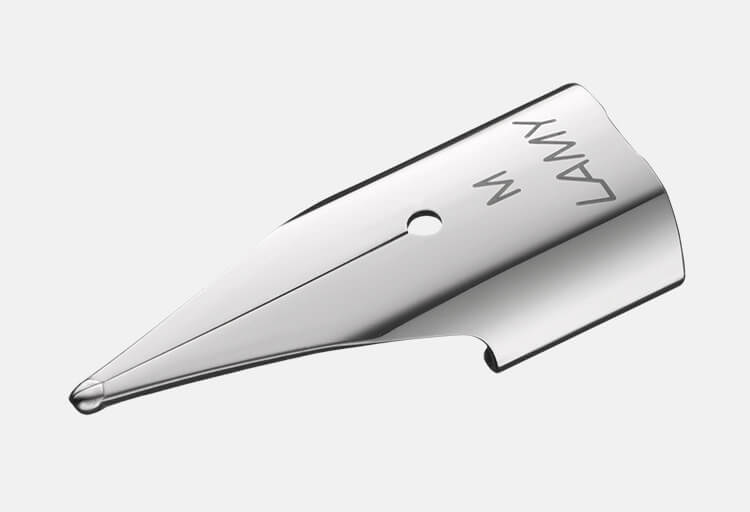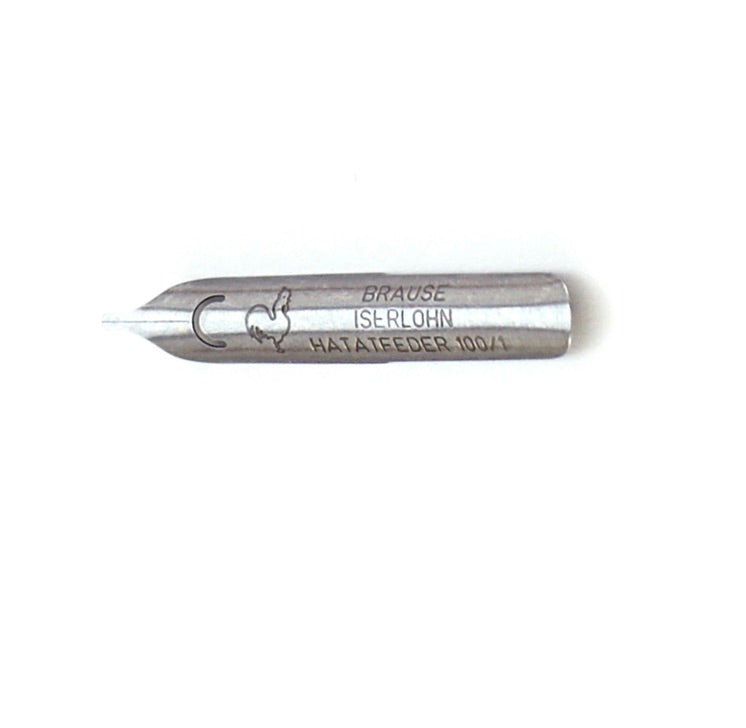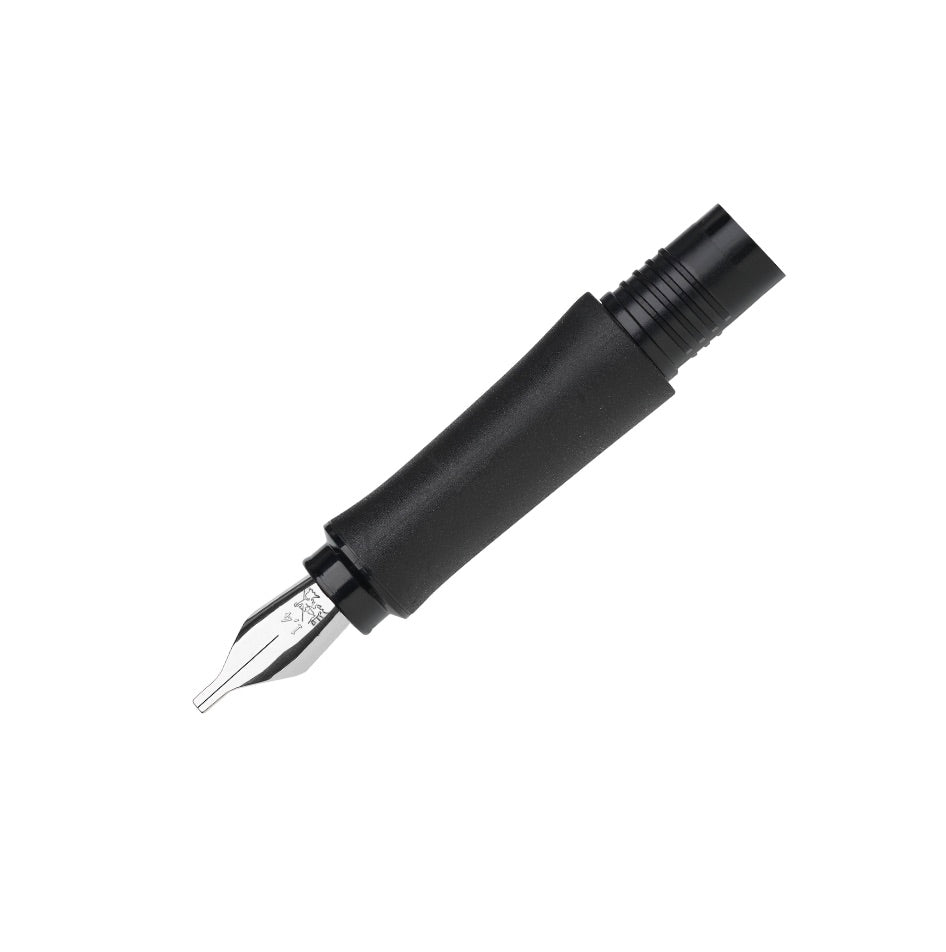Nibs
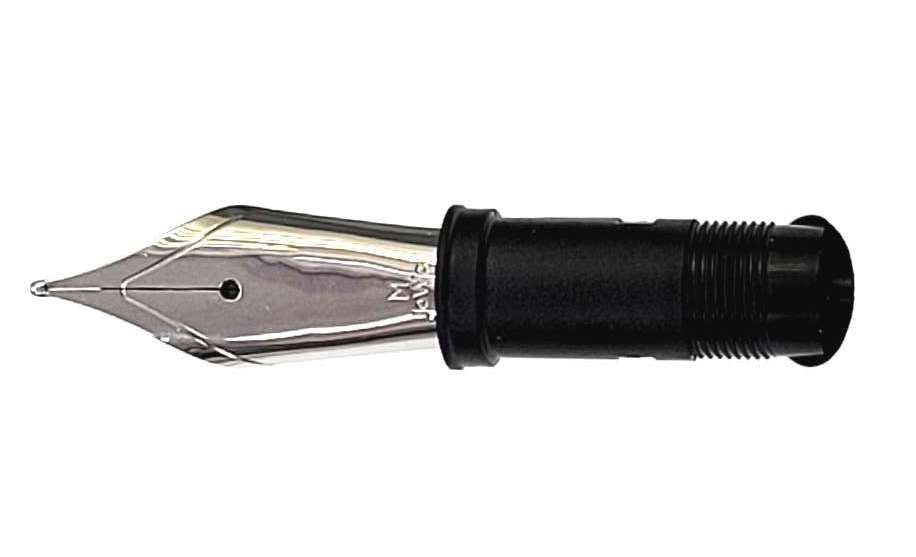
JoWo Nib Size 6 - Stainless Steel

JoWo Nib Size 6 - Duotone

JoWo Nib Size 6 - 14k Gold Nib
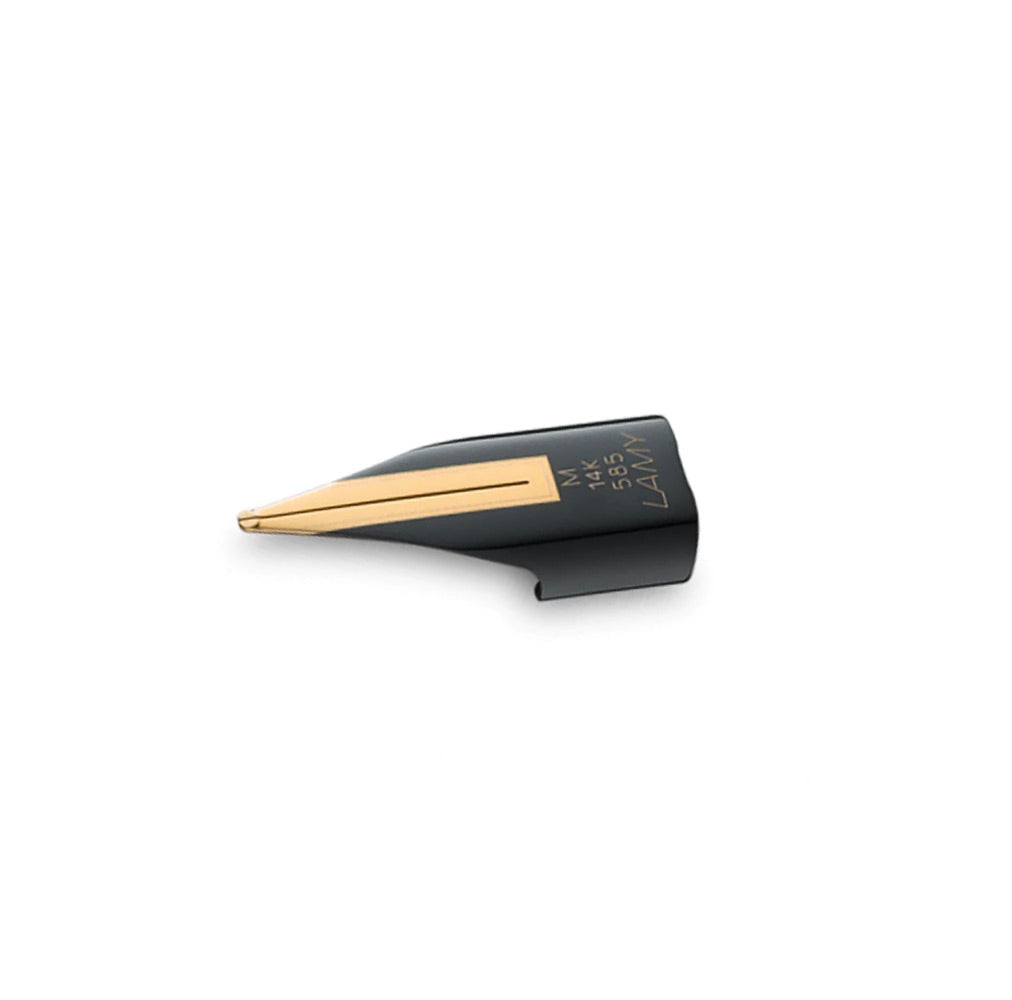
Lamy Imporium Spare Nibs - 14kt gold

Lamy Spare Nibs - 14kt gold

Brause Calligraphy - 6 Nibs


Brause Calligraphy Nibs Set
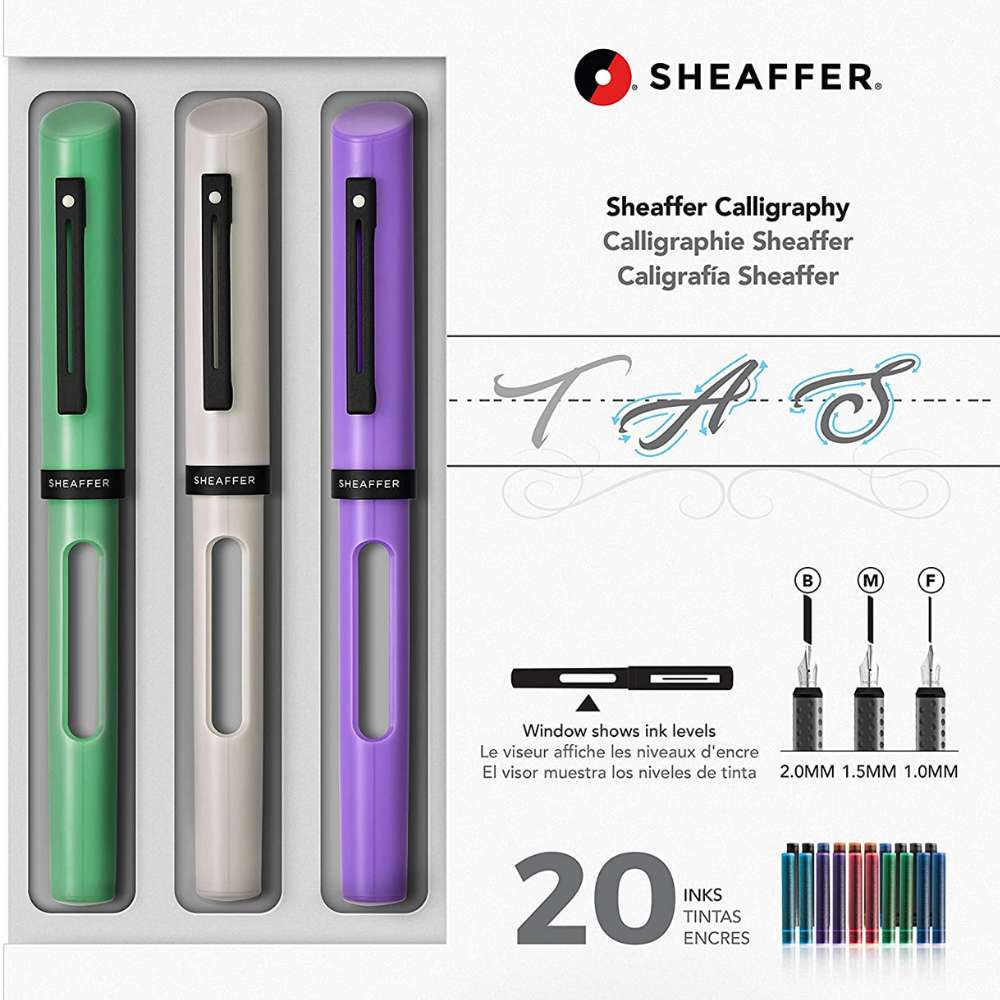
Sheaffer Calligraphy Maxi Kit (Mint/White/Lavender Pens w/ Assorted Nibs and Inks)


Kakimori Metal Nib - Antique Brass

Sheaffer Calligraphy Mini Kit Pink
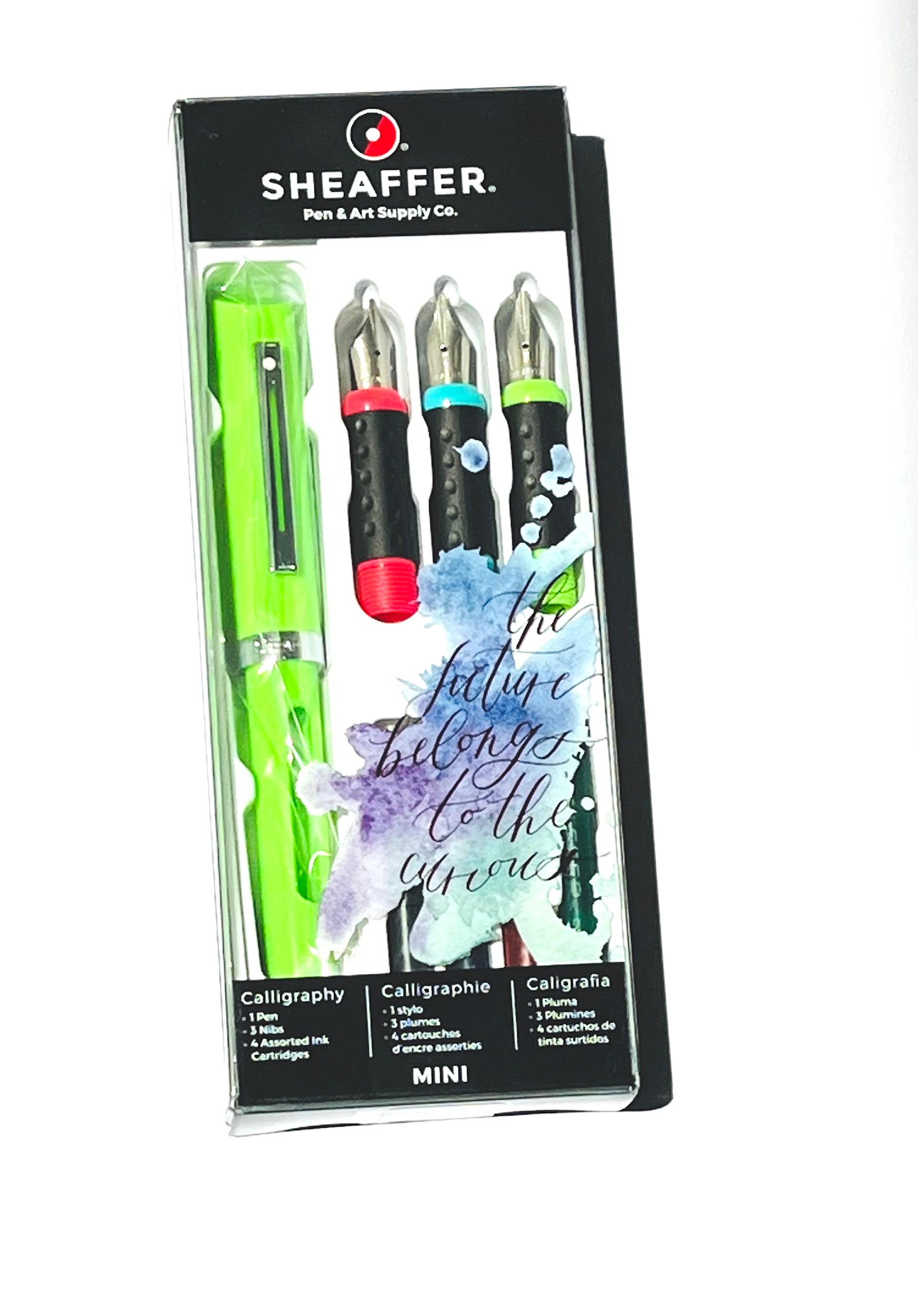
Sheaffer Calligraphy Mini Kit Lime Green

Graf von Faber Castell Tamitio Nib

Graf von Faber-Castell Bicolor Nib Unit
Fountain Pen Nibs
Fountain pens have long been cherished by pen enthusiasts and writing aficionados for their elegant design and smooth writing experience. At the heart of every fountain pen lies the nib, a small but essential component that significantly impacts the pen's performance. Fountain pen nibs come in various materials, including stainless steel and gold, each offering a distinct writing experience. In this blog, we will explore the world of fountain pen nibs, their role in the writing process, their available types, and their ability to withstand years of use.
Understanding Fountain Pen Nibs
Fountain pen nibs are the pen part that comes into contact with the writing surface and deposits ink. They vary in shape, size, and material, influencing factors such as ink flow, writing experience, and nib width. The choice of nib dramatically affects the overall writing style and stroke thickness. Understanding the different aspects of fountain pen nibs is essential for selecting the right nib for your writing preferences.
The Role of a Nib in a Fountain Pen
The nib of a fountain pen plays a crucial role in determining the ink flow and overall writing experience. It acts as a conduit for ink, allowing it to flow onto the writing surface smoothly and consistently. The tipping material at the end of the nib, also known as the ballpoint, influences the feel of the pen on paper, providing a balance between smoothness and feedback. Different nib materials, such as stainless steel and gold, offer unique writing experiences, with gold nibs known for their flexibility and responsiveness. The shape and width of the nib impact the line thickness and overall writing style. A well-crafted nib enhances the pleasure of writing with a fountain pen, making it an essential component to consider when choosing a pen.
Evolution of Fountain Pen Nibs
The evolution of fountain pen nibs can be traced back to the early days of quill pens. Quills were gradually replaced by metal nibs made of copper and bronze, but they didn't offer the same quality of writing. It was not until the 1820s that the mass production of steel nibs began in the United States, revolutionizing the writing experience. Steel nibs were durable and allowed for more precise and consistent writing. Over time, nibs evolved to cater to different writing styles, from the calligraphy-inspired styles of the past to the more modern and versatile designs we see today. Stainless steel nibs have also gained popularity, offering durability and affordability without compromising on performance.
Materials Used in Nib Manufacturing
The materials used in fountain pen nib manufacturing greatly influence the performance and durability of the nib. Stainless steel is a popular choice, known for its durability and affordability. Gold nibs, on the other hand, provide a luxurious writing experience with their flexibility and responsiveness. Other metals and alloys, such as tungsten and iridium, are used for their hardness and corrosion resistance. The choice of material depends on personal preferences and budget, with each material offering its own unique characteristics.
Stainless Steel Nibs
Stainless steel nibs are a popular choice among fountain pen enthusiasts due to their durability and affordability. These nibs offer a smooth writing experience and are less prone to damage and wear compared to softer materials. Stainless steel nibs are known for their consistency in ink flow and provide a reliable writing experience. Some manufacturers also offer black stainless steel nibs, which add a touch of elegance and sophistication to the pen. Whether you prefer a classic stainless steel nib or a sleek black stainless steel nib, both options guarantee a high-quality writing experience.
Gold Nibs
Gold nibs are often considered the pinnacle of luxury in the world of fountain pens. These nibs offer a smooth and responsive writing experience, allowing for effortless and expressive strokes. Gold nibs are known for their flexibility, which allows for variations in line thickness depending on the pressure exerted while writing. This flexibility gives the writer more control and enhances the overall writing experience. While gold nibs may be pricier compared to other materials, their unique characteristics make them highly sought after by pen enthusiasts and collectors alike, often costing hundreds of dollars more.
Other Metals and Alloys
In addition to stainless steel and gold, other metals and alloys are used in the manufacturing of fountain pen nibs. Tungsten, for example, is a hard and durable material that enhances the longevity of the nib. Iridium, despite its name, is rarely used in nib manufacturing today but is often associated with the tipping material on fountain pen nibs. Other metals and alloys, such as osmium and ruthenium, are also commonly used for tipping to improve the smoothness and performance of the nib. These metals and alloys offer unique properties that contribute to the performance and durability of the nib, ensuring a high-quality writing experience.
Anatomy of a Fountain Pen Nib
Fountain pen nibs consist of several key components that contribute to their functionality and performance. The nib tip, which comes into contact with the writing surface, is responsible for depositing ink. The feed system controls the flow of ink from the reservoir to the nib tip. The breather hole allows air to enter the feed, maintaining proper ink flow. The shape and size of the nib determine the line thickness and overall writing style. Understanding the anatomy of a fountain pen nib is essential for selecting the right nib for your writing preferences.
Nib Tip Types and Their Uses
Fountain pen nibs come in various tip types, each offering a different writing experience and line thickness. Here are some common tip types and their uses:
-
Extra Fine (EF): Provides a very thin line, suitable for precise and detailed writing.
-
Fine (F): Offers a slightly thicker line compared to EF, balancing precision with smoothness.
-
Medium (M): Provides a medium line thickness, ideal for everyday writing.
-
Broad (B): Offers a broader line, perfect for bold and expressive strokes.
-
Stub Nib: A flat-tipped nib that creates thick downstrokes and thin cross strokes, ideal for calligraphy and decorative writing.
-
Italic Nib: Similar to a stub nib, but with sharper corners, allowing for greater variation in line thickness and fluidity in calligraphic styles.
Types of Fountain Pen Nibs
Fountain pen nibs come in various types, each offering a unique writing experience and line width. Fine nibs provide a thin line suitable for precise and detailed writing, while broad nibs offer a bolder and more expressive stroke. Flex nibs, on the other hand, allow for variations in line thickness depending on the pressure exerted while writing, making them popular among calligraphy enthusiasts. The choice of nib type depends on personal preferences and the desired writing style, with some preferring the thin strokes of a fine nib and others enjoying the bold lines of a broad nib.
Fine vs. Broad Nibs
The choice between a fine nib and a broad nib depends on the desired line width and writing style, and for good reason. Fine nibs produce thin lines, making them suitable for precise and detailed writing. They are ideal for those who prefer a more controlled writing experience. On the other hand, broad nibs offer a wider line width, allowing for bold and expressive strokes. They are favored by individuals who enjoy a more dramatic and striking writing style. The decision between fine and broad nibs ultimately comes down to personal preferences and the desired visual impact of the writing.
Flex Nibs and Their Appeal
Flex nibs are highly sought after by calligraphy enthusiasts and those who enjoy artistic writing. These nibs offer a level of flexibility that allows for variations in line thickness depending on the pressure applied while writing. By applying more pressure, the tines of the nib spread, creating a wider line. Lighter pressure produces thinner lines. This flexibility allows for greater control and artistic expression, making flex nibs a popular choice for calligraphy and decorative writing, as well as for creating beautiful cursive handwriting. However, it requires practice and skill to master the use of flex nibs effectively.
Stub, Italic, and Oblique Nibs
-
Stub nibs, italic nibs, and oblique nibs are specialized types of fountain pen nibs that offer unique writing experiences.
-
A stub nib has a flat edge, creating thick horizontal strokes and thin vertical strokes, perfect for calligraphy and artistic writing.
-
Italic nibs have a sharper edge, creating crisp, thin lines and wide strokes, making them ideal for calligraphy and decorative writing.
-
Oblique nibs are slanted nibs that accommodate a specific writing angle, providing a smooth and comfortable writing experience for left-handed individuals.
-
These specialized nibs offer a range of possibilities for those looking to enhance their writing styles and delve into the art of calligraphy and lettering.
How to Choose the Right Nib for Your Writing Style
-
Choosing the right nib for your writing style requires considering factors such as nib material, width, and specialty options.
-
Determine whether you prefer a stainless steel or gold nib, as each material offers different flexibility and durability.
-
Consider the width of the nib, ranging from extra fine to broad, to suit your desired line thickness.
-
If you enjoy calligraphy or decorative writing, explore stub, italic, or oblique nib options.
-
Experimenting with different nibs and seeking from fountain pen enthusiasts can help you find the perfect nib for your writing style.
Writing Pressure and Angle Considerations
-
Stiff nibs are less flexible, requiring more pressure to create line variation, while softer nibs require less pressure for line variation.
-
The angle at which you hold the pen can impact the way the nib touches the paper and the resulting line thickness.
-
Holding the pen at a consistent angle, usually around 45 degrees, can ensure optimal ink flow and smooth writing experience.
-
Excessive writing pressure can cause the nib to dig into the paper, resulting in scratchy writing and potential damage to the nib.
-
Finding the right balance between writing pressure and angle can enhance your writing experience and minimize strain on the nib.
Matching Nib Types with Writing Purposes
-
Calligraphy pens often have specialized nibs, such as stub or italic nibs, designed to create beautiful lettering and decorative writing.
-
Everyday writing pens typically have medium or fine nibs, offering a balance between smoothness and precision.
-
Nibs with finer tips are suitable for detailed drawings and technical illustrations.
-
Artists and drafters may prefer fountain pens with flexible nibs, allowing for a range of line widths in sketching and outlining.
-
Matching the right nib type with your intended writing purpose can enhance your creativity and elevate your penmanship.
Caring for Your Fountain Pen Nibs
Proper care and maintenance of fountain pen nibs can extend their lifespan and ensure optimal performance. Regular cleaning is essential to remove dried ink and debris from the nib and feed, using lukewarm water and mild soap or pen flush. Avoid using excessive force when cleaning or inserting the into the pen, as it can damage the delicate components. Store your fountain pen in a proper case or pen holder to protect the nib from scratches and damage. With proper care, a well-maintained fountain pen nib can provide years of reliable use and a pleasurable writing experience.
Cleaning and Maintenance Tips
To clean your fountain pen nib, flush it with lukewarm water to remove any residual ink and avoid using hot water as it can damage the pen. Use a soft cloth or tissue to gently wipe the nib clean after flushing to remove any remaining ink or debris, and regular maintenance, such as cleaning and lubricating the piston or converter, can ensure smooth ink flow and prevent clogging. Avoid leaving your fountain pen unused for extended periods without cleaning, as ink residue can dry and cause blockages in the nib and feed, but with proper cleaning and maintenance, your fountain pen nib can provide years of reliable use and maintain its writing quality.
When to Replace a Nib
Nibs can last for many years with proper care, but there may come a point when they need to be replaced due to wear and tear. Signs that it may be time to replace a nib include scratchy writing, inconsistent ink flow, or damage to the nib tip. If repeated cleaning and adjustments do not improve the writing quality, it may be necessary to replace the nib with a new stylus. Consider consulting a professional nib technician or contacting the pen manufacturer for advice on replacing a nib. Replacing a nib with a stylus can restore the writing quality of your fountain pen and ensure a pleasurable writing experience.

